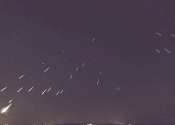How Galaxies Came To Be: Astronomers Explain Hubble Sequence
(PhysOrg.com) -- For the first time, two astronomers have explained the diversity of galaxy shapes seen in the universe. The scientists, Dr Andrew Benson of the California Institute of Technology (Caltech) and Dr Nick Devereux ...









